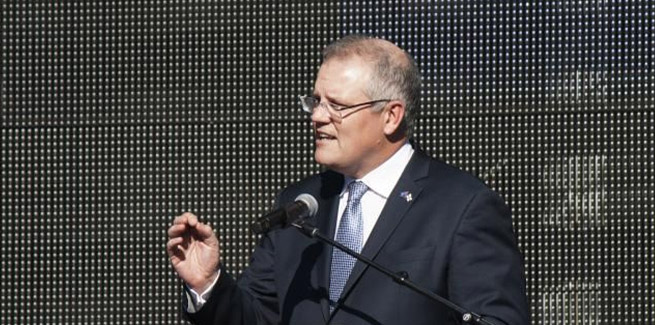Prime Minister Scott Morrison has released a “targeted” $17.6 billion stimulus package designed to “keep Australians in jobs, keep businesses in business and support households”, in light of the growing impact of the coronavirus (COVID-19) on the domestic economy.
According to the government, up to 6.5 million individuals and 3.5 million businesses would be directly supported by the new measures.
The stimulus package has four key elements, which include:
- supporting business investment
- providing cash flow assistance to help small and medium-sized business to stay in business and keep their employees in jobs
- targeted support for the most severely affected sectors, regions and communities
- household stimulus payments to benefit the wider economy
Support for business investment
Measures outlined in the package to support business investment include:
- $700 million to increase the instant asset write-off threshold from $30,000 to $150,000 and expand access to include businesses with aggregated annual turnover of less than $500 million (up from $50 million) until 30 June 2020.
- $3.2 billion to provide a “time-limited” 15-month investment incentive (through to 30 June 2021), by accelerating depreciation deductions. Businesses with a turnover of less than $500 million will be able to deduct an additional 50 per cent of the asset cost in the year of purchase.
These measures are effective immediately.
Cash flow assistance for businesses
To support businesses with liquidity constraints caused by a halt in activity from the COVID-19 outbreak, the government has committed:
- $6.7 billion to boost cash flow for employers by up to $25,000 with a minimum tax-free payment of $2,000 for small and medium-sized businesses with a turnover of less than $50 million from 1 January 2020 and 30 June 2020. Businesses will receive payments of 50 per cent of their business activity statements or instalment activity statement from 28 April with refunds to then be paid within 14 days.
- $1.3 billion to support the jobs of around 120,000 apprentices and trainees by providing eligible employers with a wage subsidy of 50 per cent of the apprentice’s or trainee’s wage for up to nine months from 1 January 2020 to 30 September 2020. If a small business is not able to retain an apprentice, the subsidy will be available to a new employer that employs that apprentice.
Stimulus to households
To support spending in the broader economy, the government will also provide a one-off stimulus payment of $750 to pensioners, social security, veteran and other income support recipients and eligible concession card holders.
The tax-free payment will not be considered income for social security, farm household allowance and veteran payments.
The payments, which total $4.8 billion, will be made from 31 March 2020 on a progressive basis, with over 90 per cent of payments expected to be made by mid-April.
Assistance for severely affected regions
Finally, the government has set aside $1 billion to support sectors, regions and communities that have been disproportionately affected by the economic impacts of the coronavirus outbreak, including those heavily reliant on industries such as tourism, agriculture and education.
According to the government, this would include the waiving of fees and charges for tourism businesses that operate in the Great Barrier Reef Marine Park and Commonwealth National Parks.
Administrative relief will also be provided for certain tax obligations, including deferring tax payments up to four months.
The Australian Taxation Office (ATO) has been commissioned to set up a temporary shopfront in Cairns to assist small business seeking tax relief and will consider expanding its presence in other significantly affected regions.
Stimulus to add 1.5% to GDP
Following the release of the stimulus package, Treasurer Josh Frydenberg revealed that according to Treasury estimates, the federal government’s stimulus would add 1.5 per cent to GDP growth in the June quarter.
However, Treasurer Frydenberg acknowledged that the full economic impact of the coronavirus remains “unknown”
Prime Minister Morrison said he expects the stimulus package to help prepare the domestic economy for a “looming international economic crisis”.
“Just as we have acted decisively to protect the health of the Australian people, based on the best evidence and medical advice, our support package responds to the economic challenges presented by this pandemic in a timely, proportionate and targeted way,” Prime Minister Morrison said.
“Our plan will back Australian households with a stimulus payment to boost growth, bolster domestic confidence and consumption, reduce cash flow pressures for businesses and support new investments to lift productivity.
“Australia is not immune to the global coronavirus challenge, but we have already taken steps to prepare for this looming international economic crisis.
“The economy needs temporary help right now to bounce back better so the livelihoods of all Australians are protected.”
Prime Minister Morrison said the government would continue to monitor the economic impact of COVID-19, adding that “if more is required, more will be done”.
[Related: ‘Think again’: PM issues call to action amid recession fears]
 ;
;
